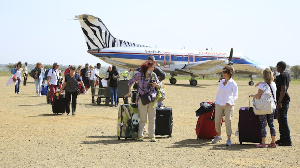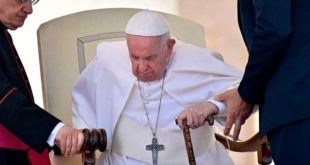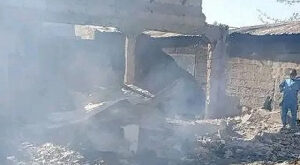Full inbound flights carrying tourists, vans heading to the national parks and rising hotel occupancy.
This is a scenario that was unthinkable two years ago after the outbreak of Covid-19, followed by travel restrictions globally.
With the lifting of the restrictions and sharp increase of arrivals and new fears have set in; are we prepared for the influx?
Tourism stakeholders in Arusha, the destination of over 70 percent of tourists visiting the country, have mixed feelings.
While some admitted cases of inadequate accommodation, others say the country has always been prepared for the dollar bringing guests.
“It is not necessarily an influx. It is a high season and business is back to routine normal,” remarked Oscar Lyimo, a tour operator.
He said most of the foreigners now sampling different tourism insights across the country made their bookings in 2019 and 2020.
“Some had their payments settled way back in 2019 before Covid,”he explained, noting that they were in the country to honour their bookings. Mr Lyimo, the director of the Arusha-based Red & Yellow Barbet Safaris, admitted the shortage of rooms in some areas.
This is more pronounced in the country’s most preferred destinations such as Ngorongoro Conservation Area and Serengeti National Park.
He said the scarcity of rooms was a challenge to the investors to put up more hotels in areas with high influx of visitors.
The tented camps are among those preferred especially in Serengeti due to flexibility to accommodate many guests.
Andrew Malalika, the director of Jackpot Safaris said the influx of visitors after the lifting of travel restrictions was a blessing.
“The message is clear. Tanzania remains a prime destination; a preferred place to visit globally”, he told The Citizen.
Apparently, the abrupt surge of the visitors caught some operators unprepared because some had closed down after the pandemic.
However, he observed that it is not surprising that the northern tourism circuit is short of enough hotels for the guests.
“We need to invest more on hotels and lodges. There aren’t enough bed nights in ‘mbugani’ (animal-filled plains)”, he said.
A bed night is a measure of occupancy of one person assigned to one bed for one night. It is a hospitality industry term for quantifying bed occupancy as opposed to standard room occupancy.
He called for an aggressive marketing of the tourist attractions in the southern circuit in order to reduce congestion in the north.
“All tourists coming to Tanzania think of Serengeti”, Mr Malalika said, noting that Mkomazi, Saadani and the recently opened Nyerere National Park should be marketed.
He added that the surge of tourists beckoned at the time the quality of roads within the national parks are in poor state.
“Roads used for game drives within Serengeti and Ngorongoro are in a pathetic state and uncomfortable to tourists”, he said.
A tourism promotion officer with the Tanzania Tourist Board (TTB) in Arusha downplayed assertions that the country was not prepared for the visitors.
“We are all prepared. Our facilities may have been overwhelmed due to last minute bookings”, said Mr Ian Mwaimu.
He said most of the tourists visiting the country were from the traditional source markets, notably the United States, Canada and the United Kingdom.
“Many of them made their bookings during the lockdown and some in the last six months or so,” he clarified.
Last-minute bookings were made by tourists from Germany, France and Spain whom, he said, do not necessarily aim for top-class hotels.
He added that occupancy rate in Arusha city has gone up in recent days, enough sign that the sector is recovering fast.
However, Mr. Mwaimu insisted that most tourists, like other visitors, remained keen on “pocket-friendly” accommodation facilities.
This has led to a rise in the number of guest homes called ‘home stays’ in which the guests stay with some families in the city.
Arusha hotelier Walter Maeda said the surge of tourists was an eye-opener on the quality of the local staff in the industry.
“Our guides are not well trained. Youths have been randomly picked due to the surge of the visitors,” he told The Citizen.
He cited cases where 1,000 tourists landed at the Kilimanjaro International Airport (KIA) and were taken to the bush without properly-trained guides.
Mr Maeda, who is the chairman of the Arusha business chamber, faulted those claiming there were not enough hotels in Arusha.
“We have countless hotels and lodges on the periphery of the city; tailor-made for the tourists.
“Others are in USA, Tengeru, Karatu and in the bush. Tourists are not necessarily sleeping in the city,” he pointed out.
Other stakeholders interviewed wondered as what was being done to enable Air Tanzania Company Limited (ATCL) to play its role in tourism promotion.
“ATCL needs to partner with the global carriers to bring in tourists. We have the capacity (enough planes) but we are yet to fully utilise them,” said an industry player.
Tanzania Tourism on Rebound
The rebound is more pronounced in Tanzania where tourist arrivals this year are expected to surge well above the one million mark after two years.
In 2019, before the killer virus reared its ugly head, arrivals of foreign tourists into the country had hit a record 1.5 million.
With the lockdowns in the traditional tourism source markets, the numbers dropped sharply to a mere 622,000.
Last year, the figure had gone up to slightly over 900,000 visitors, according to the ministry of Natural Resources and Tourism.
Signs that the arrivals will move closer to the 2019 record 1.5 million visitors is no longer guesswork.
Between January and July this year, Tanzania has registered 742,133 visitors, representing a 62.7 percent rise from the corresponding period last year, where 456,266 visitors were received.
The number of tourist arrivals last month stood at 166,736 as opposed to 81,3017 arrivals a year earlier.
Perhaps there is a slither of hope after the government announced a sequel to the ‘Royal Tour’ dubbed ‘Hidden Tanzania’ that is said to focus on promoting the southern circuit tourism wealth.
Source: thecitizen.co.tz
 Home Of Ghana News Ghana News, Entertainment And More
Home Of Ghana News Ghana News, Entertainment And More





